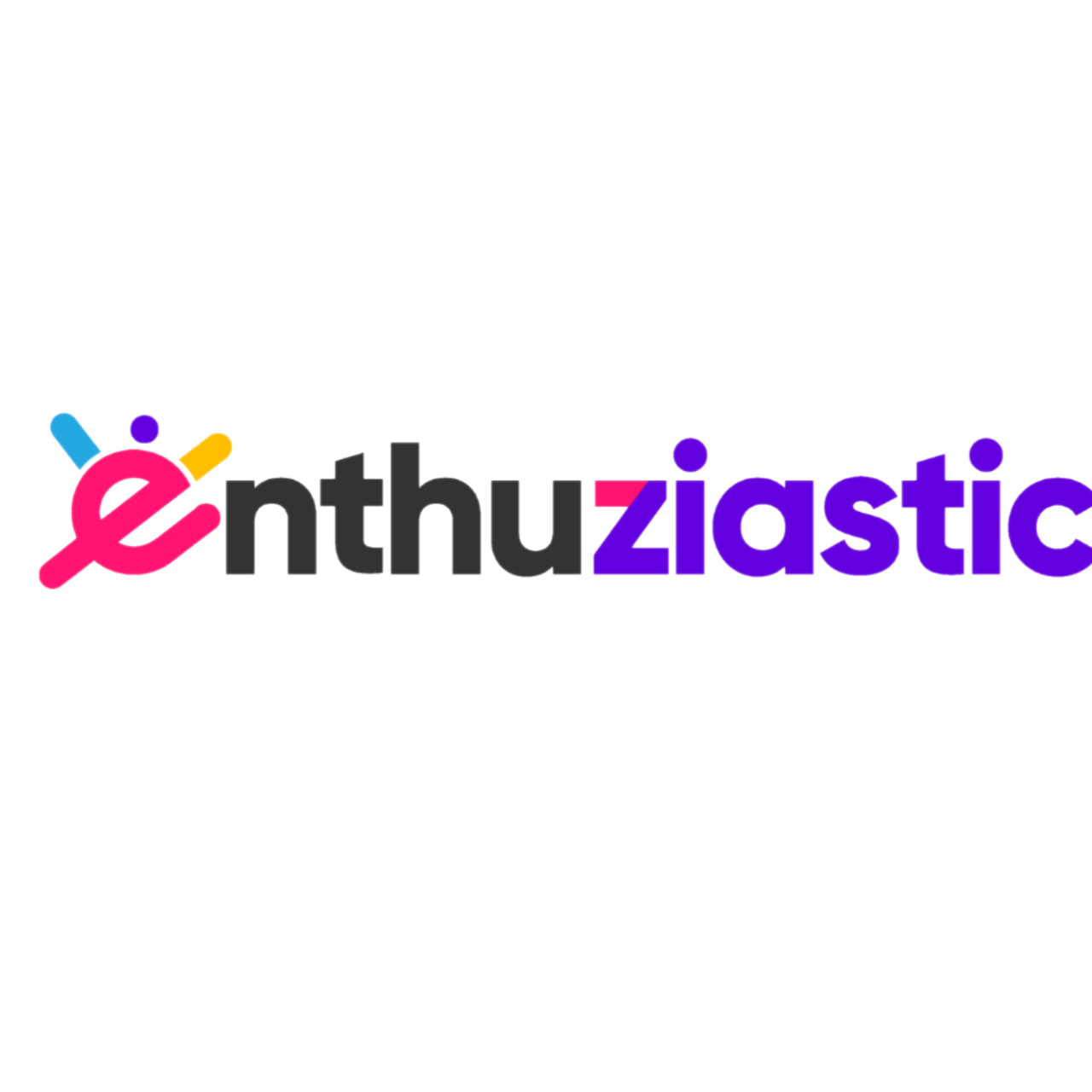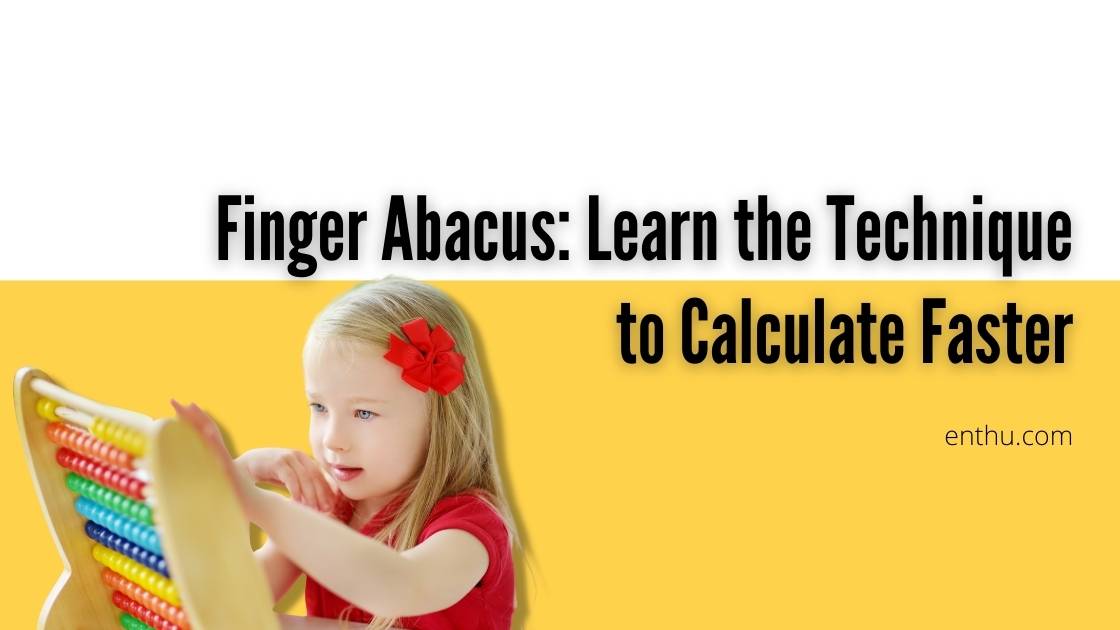Is your kid struggling with math? Are they confused in simple mathematical operations?
Well, if that’s the scenario, you must check out finger abacus techniques. These techniques are as quick and efficient as an abacus, but the perk is that you only need your fingers. That’s all!
With finger abacus formulae, your kid can calculate faster than before, eventually acing every math test. Don’t trust me yet?
Keep reading and discover the amazing calculating techniques you have literally at your fingertips.
What is Finger Abacus?
Finger abacus is a method of calculating that resembles the counting process of an abacus/soroban. It’s also called chisanbop.
In this method, the practitioner uses their fingers as the beads and reads them in different values.
What are the Values of Fingers in Finger Abacus?
As this is a counting method based on fingers, it’s extremely important to know which finger represents what value. Let’s begin with the values of closed fists.
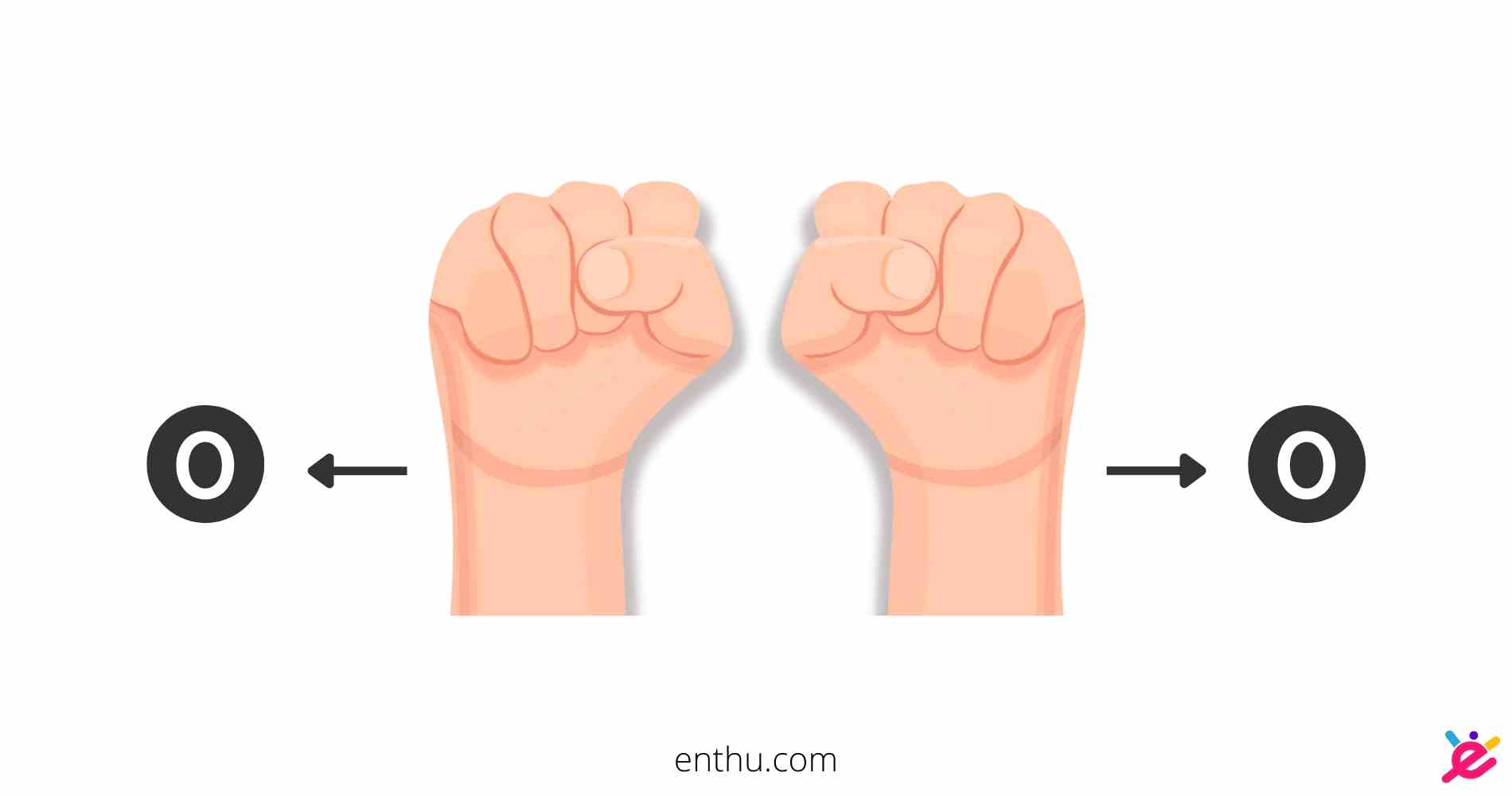
A closed fist in finger abacus always represents 0.
The fingers of right hand and left hand stand for different values. Take a look at the picture below.
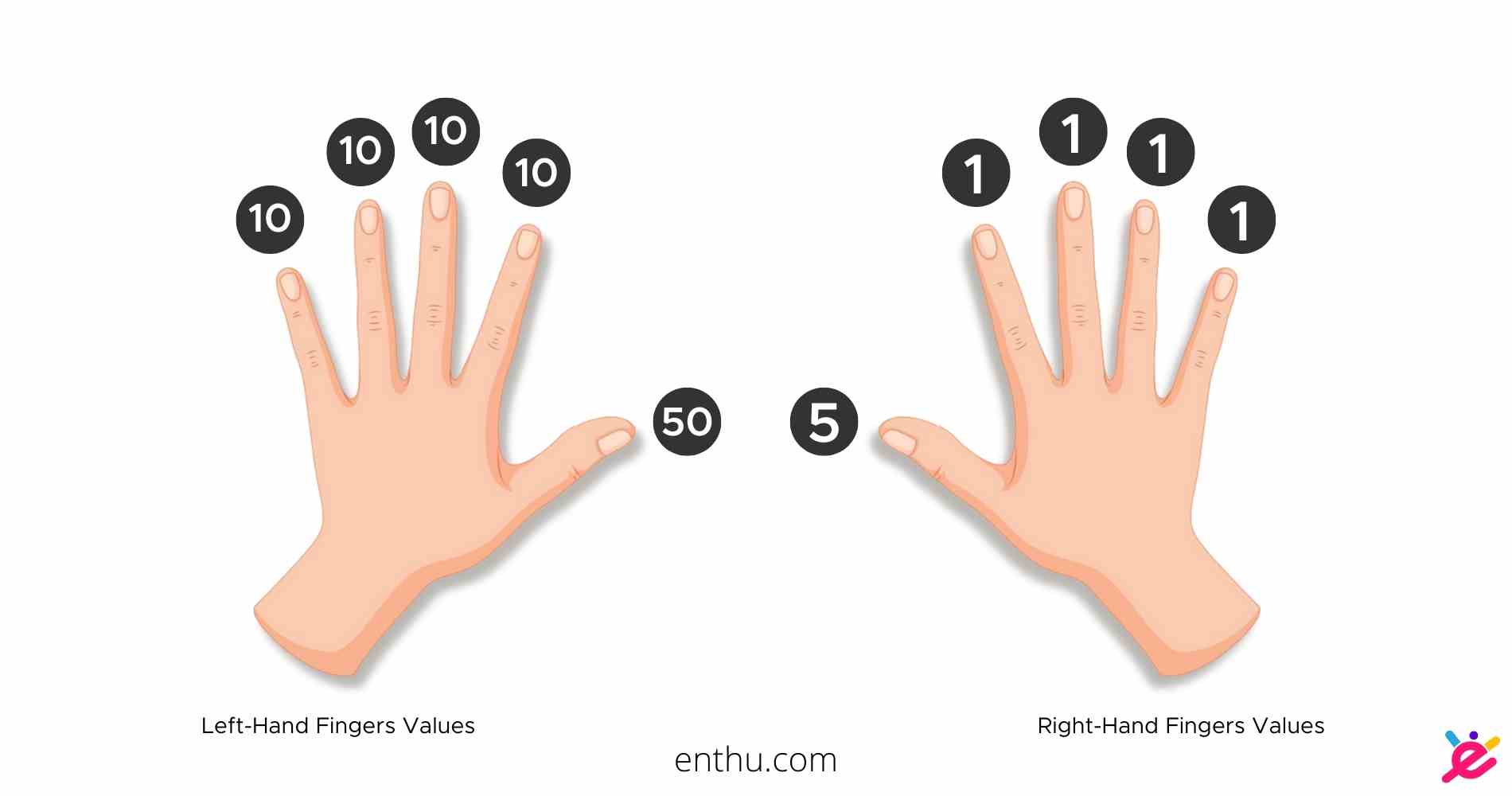
As you can see in the fingers of left hand and the finger of right hand have a huge difference in the values they represent. If you find it hard to memorize it from the above picture, I recommend to note the values down by making a table (as shown below).
First, let’s check out the table for right-hand fingers.
| Right Hand Fingers | Values |
| Closed Fist | 0 |
| Index finger | 1 |
| Middle finger | 1 |
| Ring finger | 1 |
| Pinky finger | 1 |
| Thumb | 5 |
Now, let’s look at the table representing values of the fingers in our left hand.
| Left Hand Fingers | Values |
| Closed fist | 0 |
| Index finger | 10 |
| Middle finger | 10 |
| Ring finger | 10 |
| Pinky finger | 10 |
| Thumb | 50 |
Learn How to Use an Abacus
Finger Abacus Vs. Soroban
What is Soroban?
Soroban is a type of abacus that originated in Japan. It has vertical rods intersected by a horizontal rod. Each rod has five beads on the lower deck and one bead on the upper deck.
How is Finger Abacus similar to Soroban?
The counting process on your fingers is similar to soroban. Each hand represents as one rod in a soroban.
So, while counting, the thumb acts like the lonely bead on the upper deck, and the remaining 4 fingers resemble the four beads on the lower deck of the rod.
All about Soroban vs Suanpan
How to Do Math on Finger Abacus?
Counting
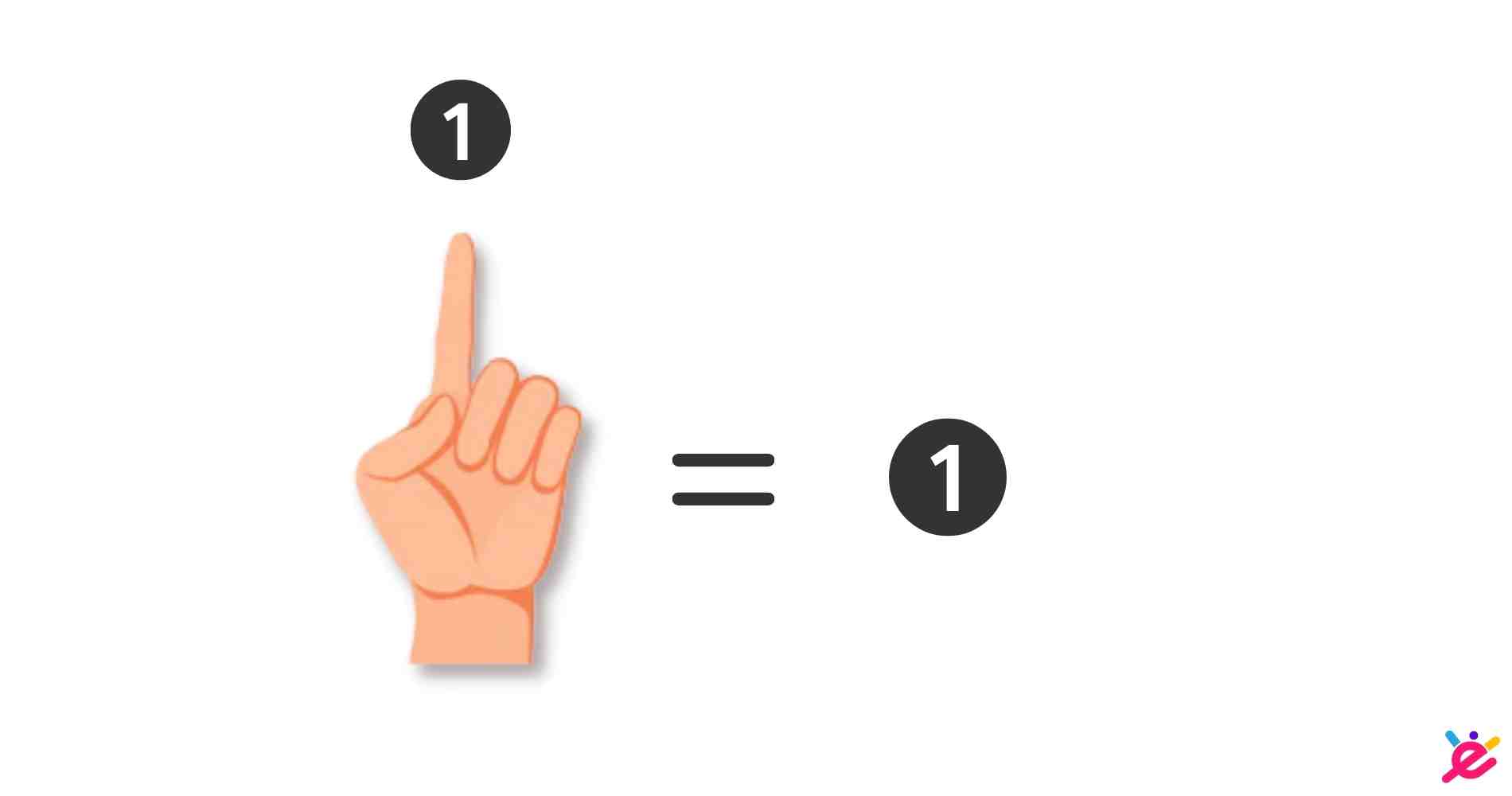
In the above picture, you can see the index finger of the right hand. The value of the index finger of the right hand is 1. So, the count is 1.
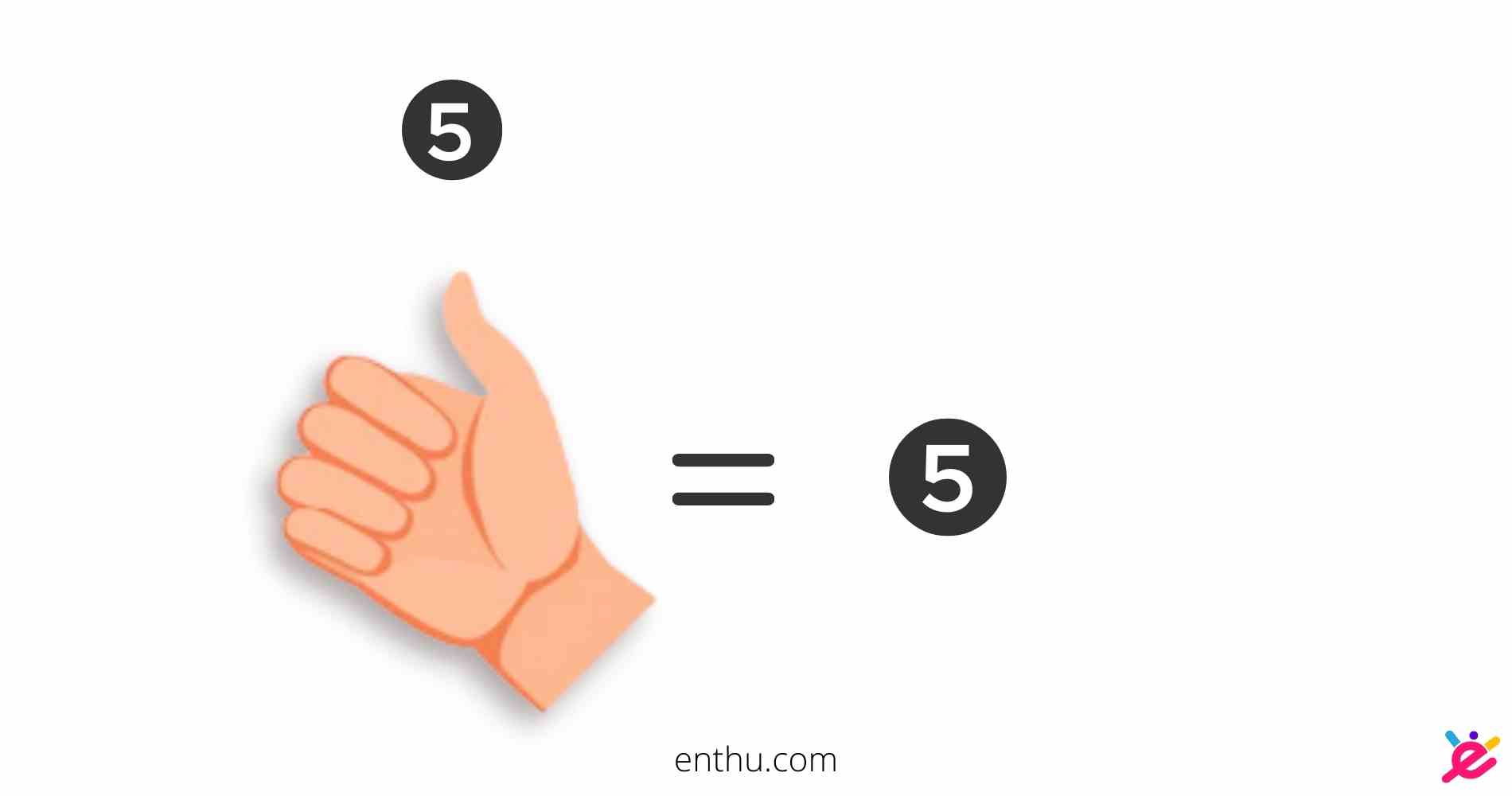
The value of the thumb of the right hand is 5. So, in the above picture, the count is 5.
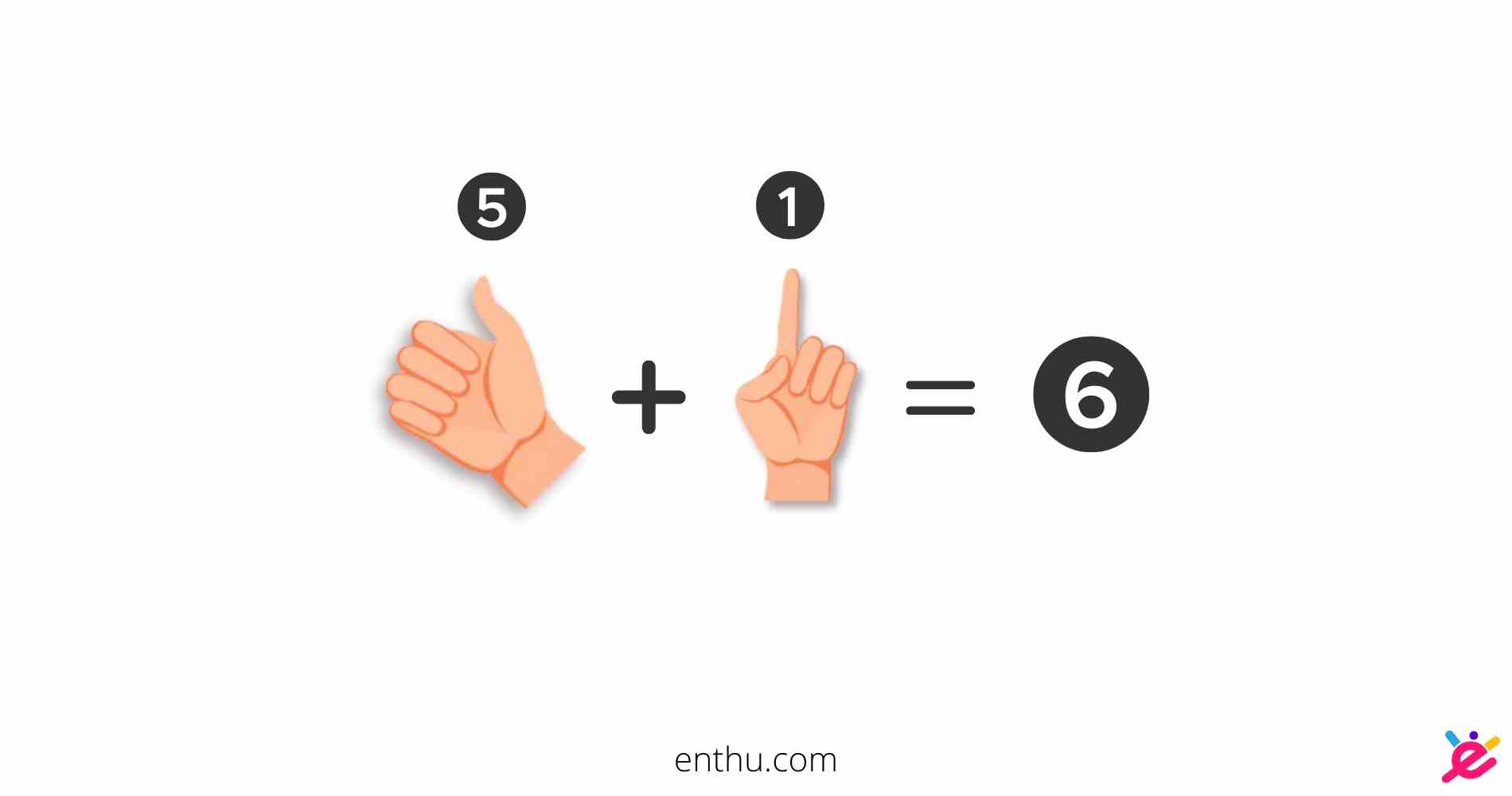
In the above picture, we have a thumb and a finger of the right hand. As the values of the thumb and a finger of the right hand are 5 and 1, respectively, so the count is:
5
+1
______
=6
Let’s take a look at another example.
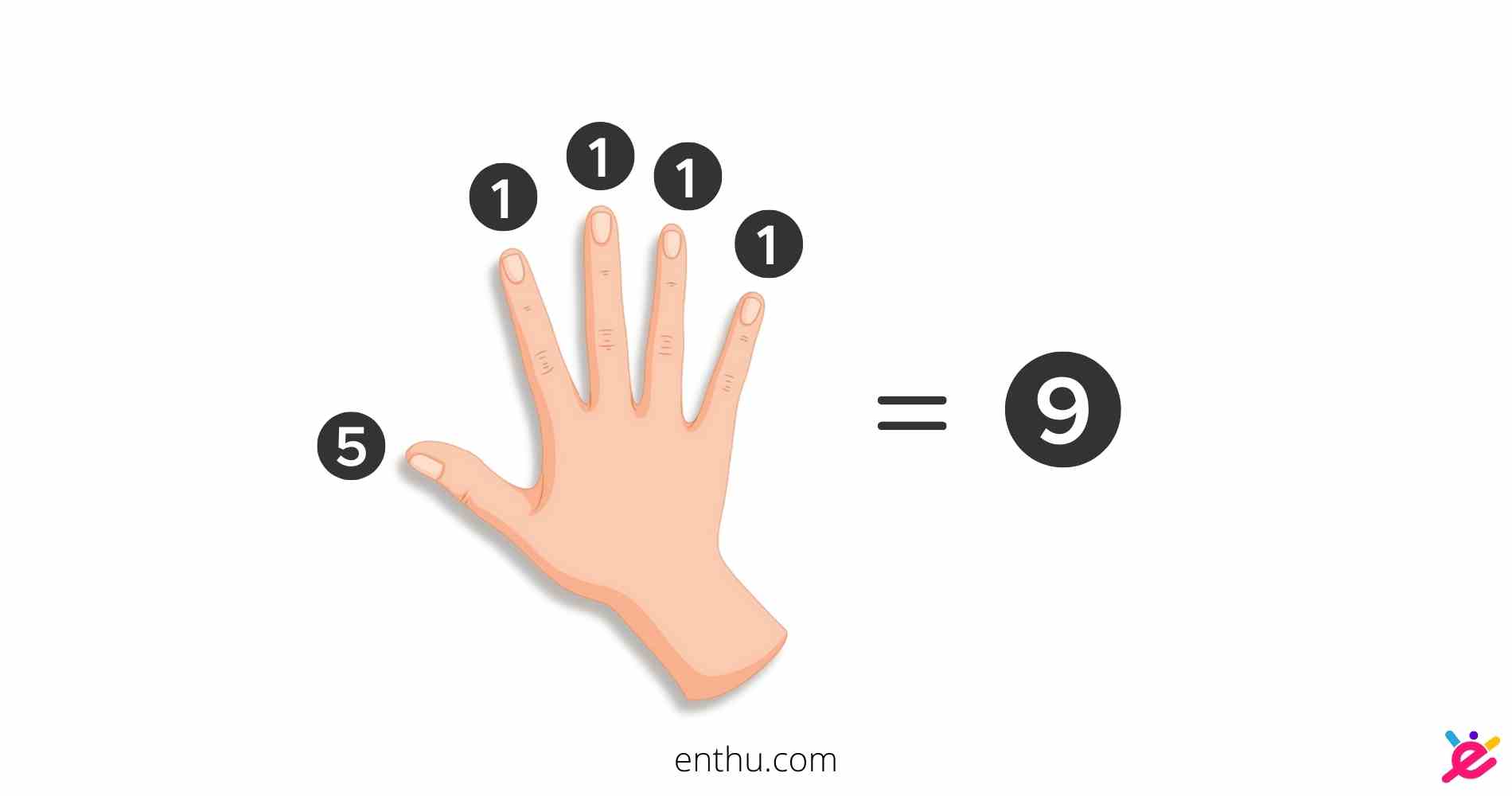
In the above picture, we have a thumb, an index finger, a middle finger, a ring finger, and a pinky. As per the values, the count is:
5
1
1
1
+1
_________
=9
Represent Bigger Numbers
(i) 50
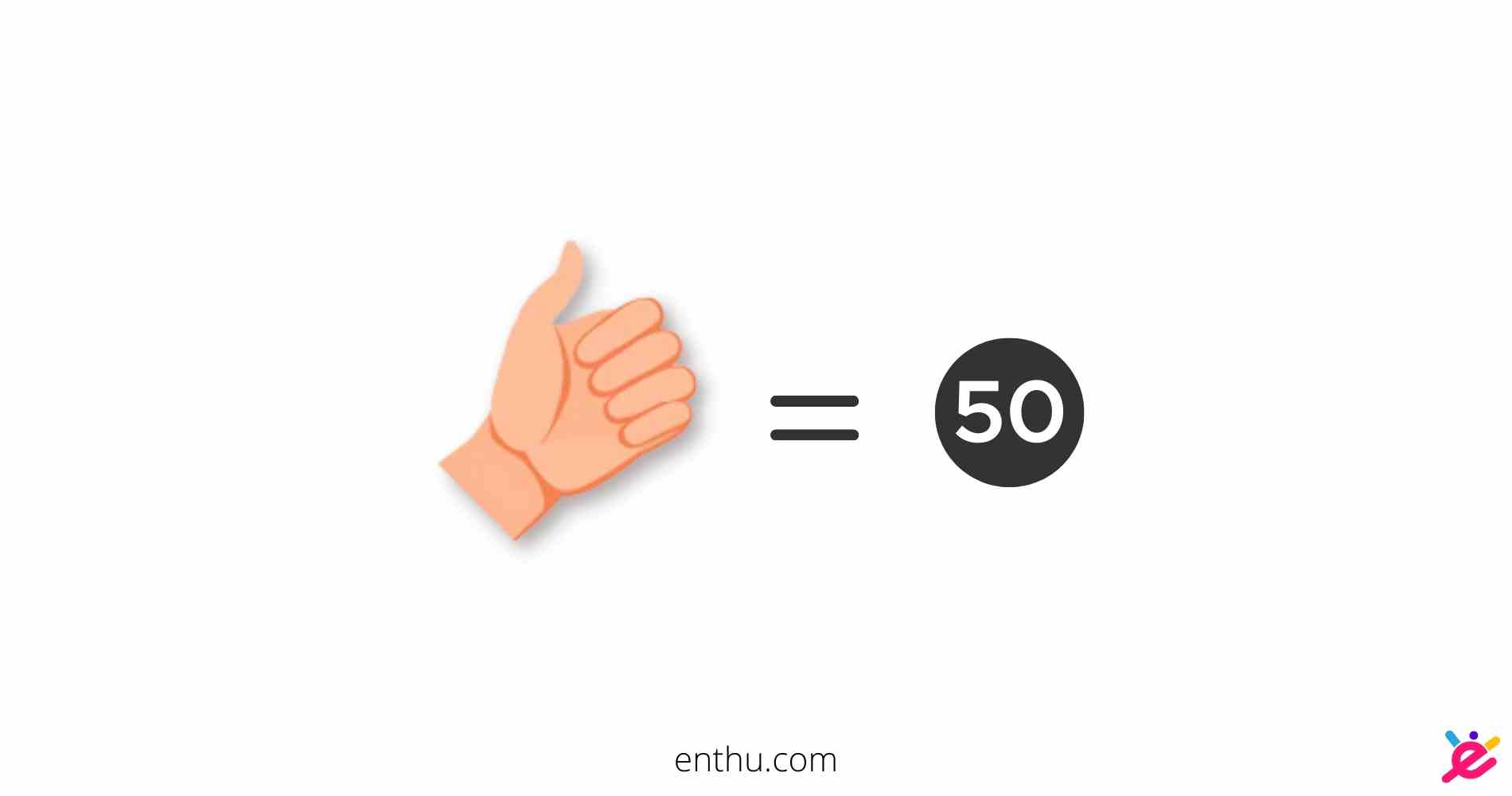
The value of the left-hand thumb is 50, so that’s all you need.
(ii) 78
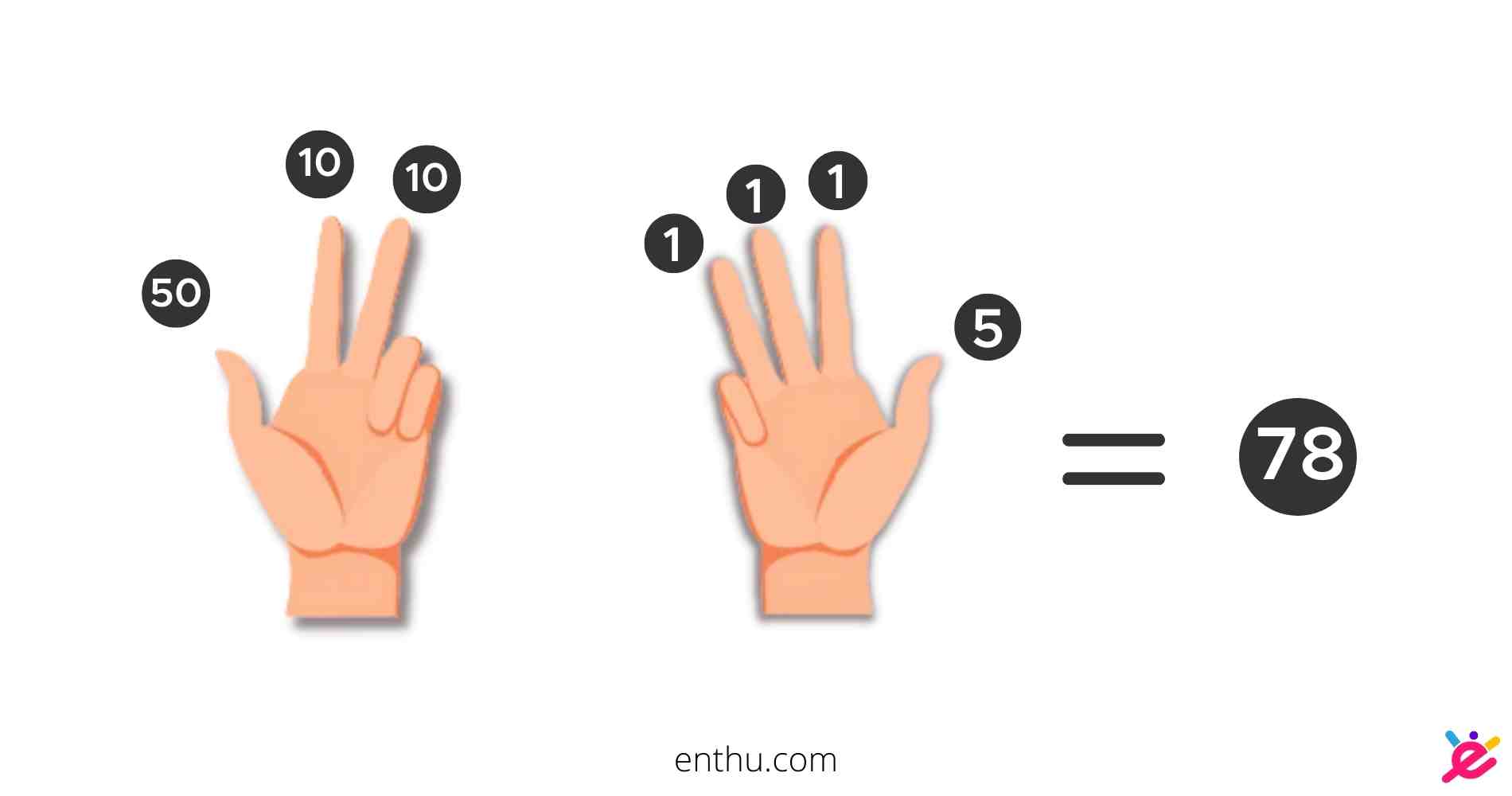
First, check out the ones and tens. There’s 7 in the tens-place, which means you need 70 on your left hand, and 8 in the ones-place, which means you need 8 on your right hand. Now, represent accordingly.
Open your thumb and two more fingers (50+10+10) on your left hand to represent 70. Similarly, open your thumb and three more fingers (5+1+1+1) in your right hand to represent 8.
There you have 78 on your fingers.
(iii) 99
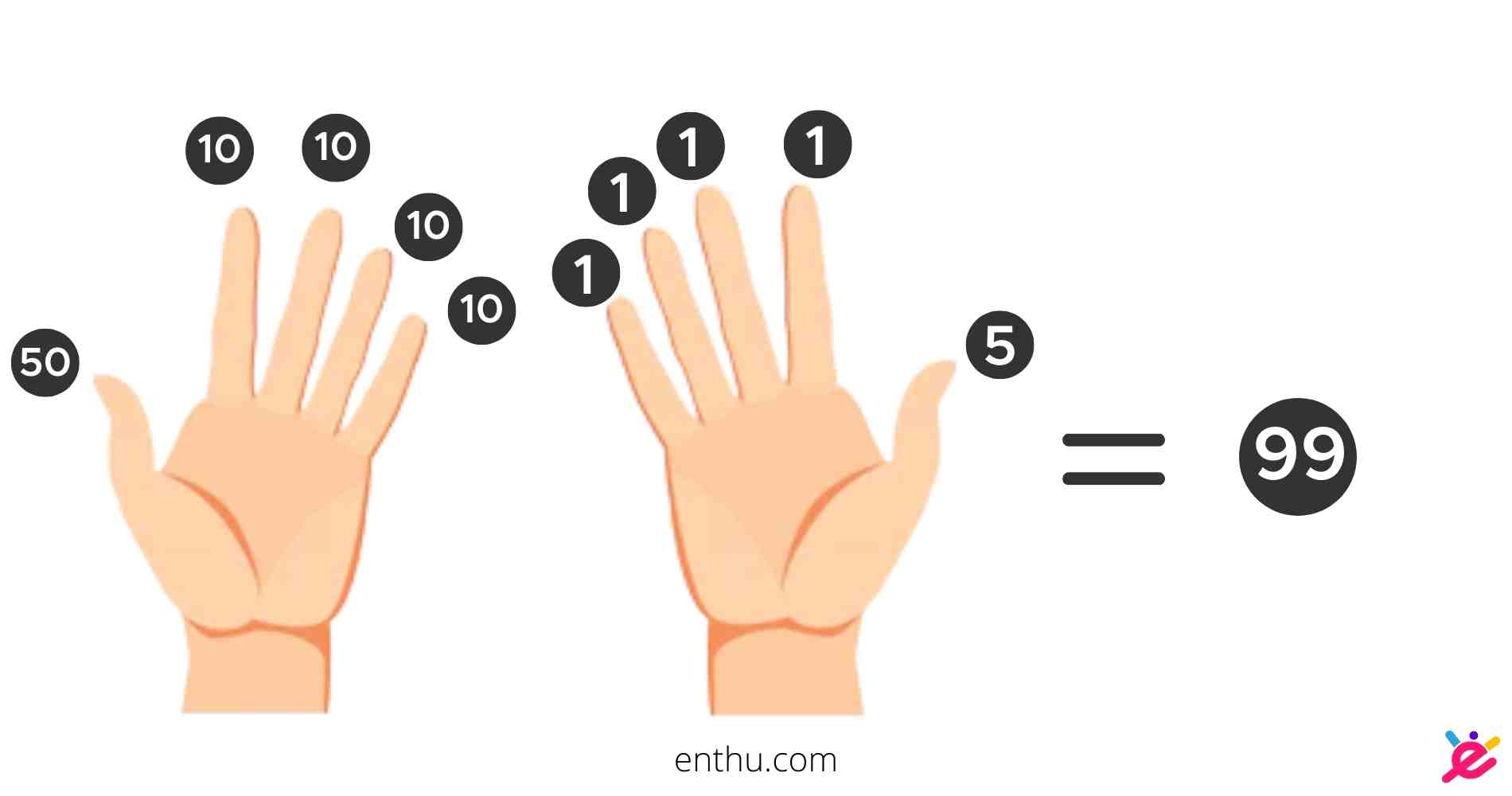
Like the previous example, all you need is 90 on your left hand and 9 on your right hand.
So, open your thumb and the remaining 4 fingers (50+10+10+10+10) on your left hand to represent 90. Likewise, open your thumb and other fingers (5+1+1+1+1) in your right hand to represent 9.
This is how you represent 99 on your fingers.
Addition on Finger Abacus
How to add single-digit numbers?
Let’s try to add 5+3
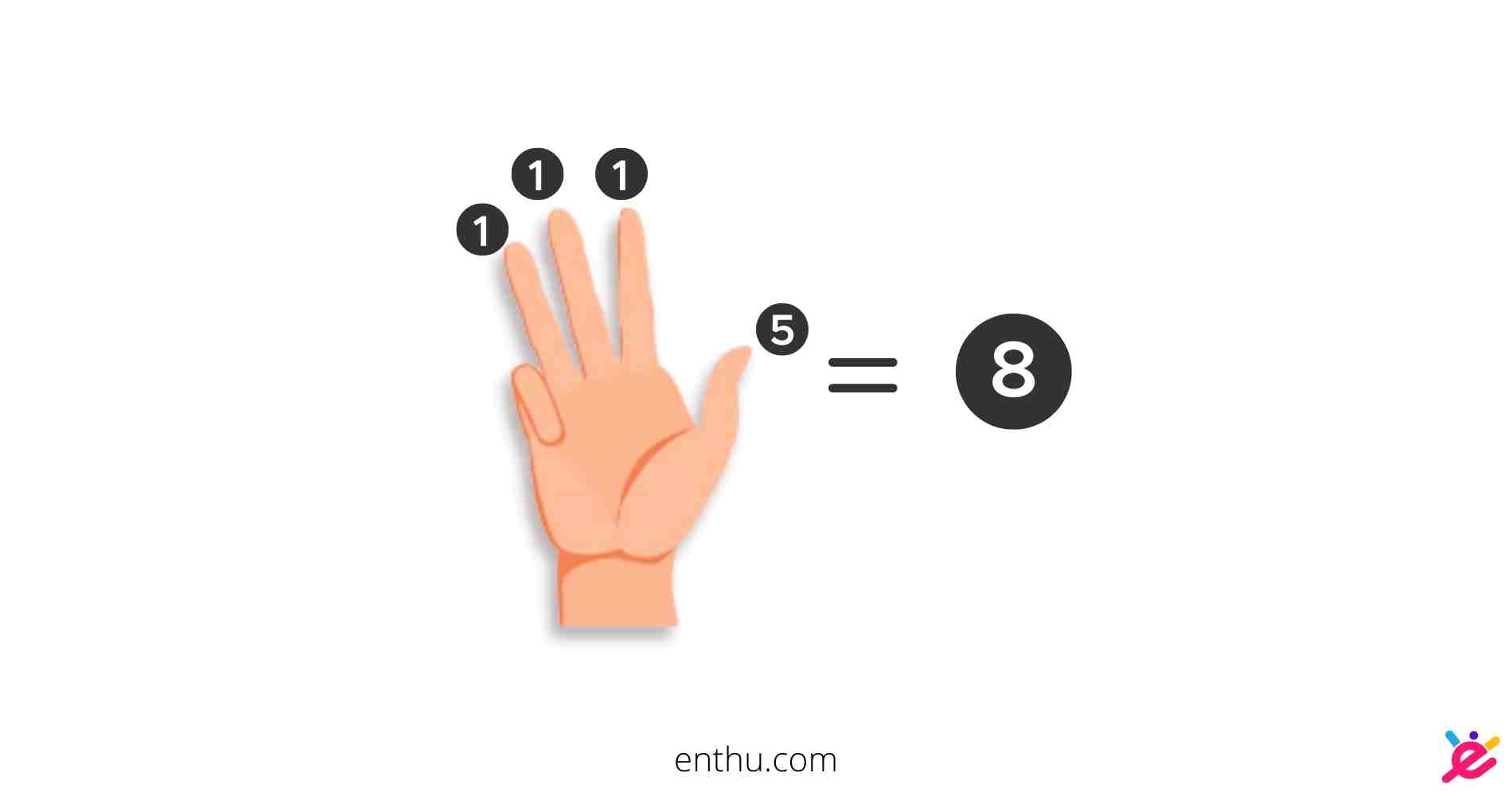
- Begin with a closed fist.
- Next, open your thumb because we’ve 5.
- Then, open your index, middle, and ring fingers.
- Now, first count 5, then keep adding each finger as 1.
The result is 8.
How to add double-digit numbers?
Let’s try to add 52+41
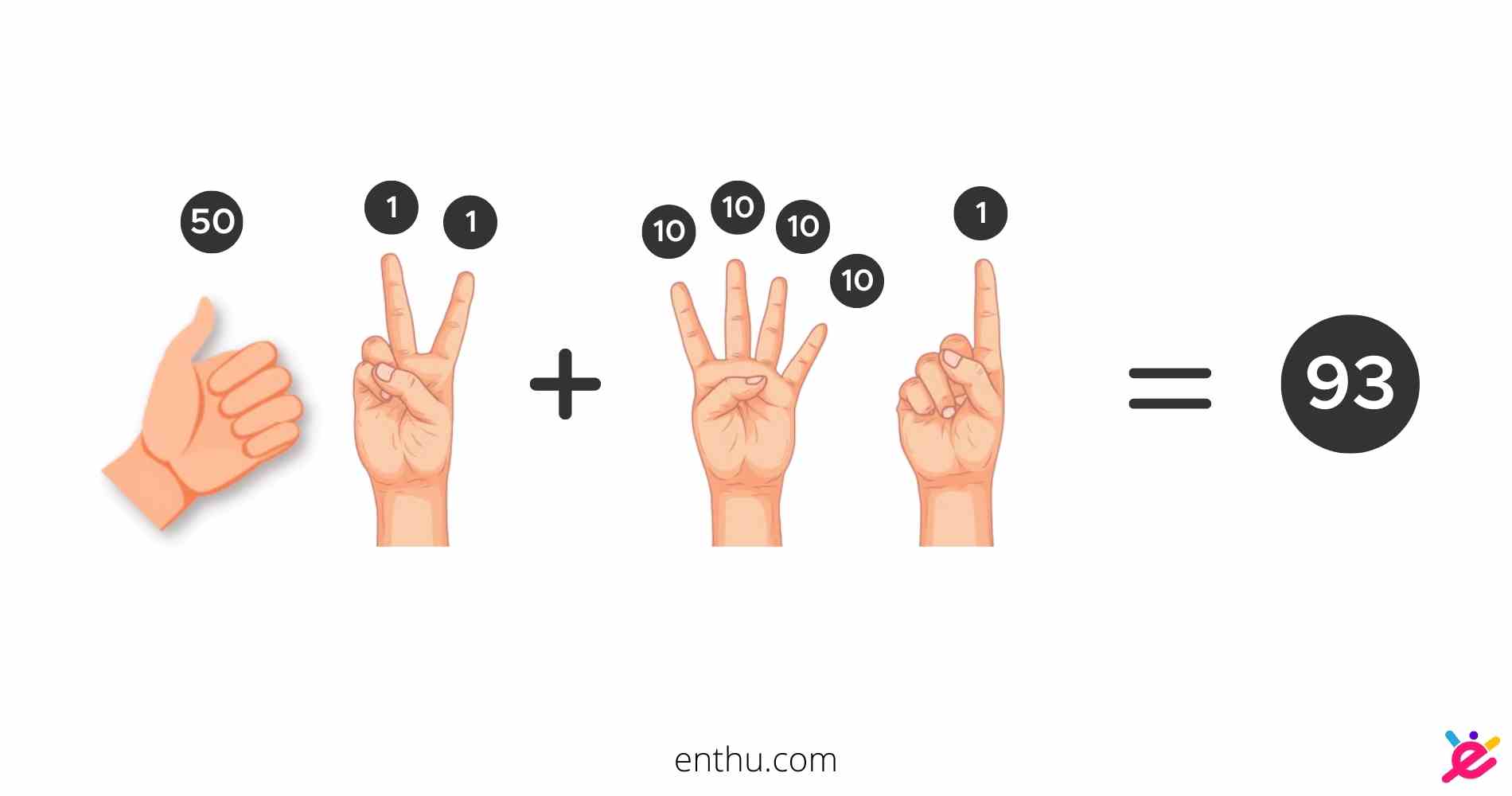
- Begin by representing 52: open thumb on your left hand and two fingers on your right hand. You got 52.
- Next, add 41. Open your 4 fingers (10+10+10+10) on your left hand and 1 finger on your right hand (1).
- Now count all the fingers. It’s 90 on your left hand and 3 on your right hand.
The answer is 93.
The Chinese used Abacus for Business Transactions
Subtraction on Finger Abacus
How to subtract single-digit numbers?
Let’s try to subtract 8-3

- Represent 8 on your right hand with the thumb and 3 fingers.
- Next, close 3 fingers to minus three.
The answer is 5.
How to subtract double-digit numbers?
Let’s try to 89-43
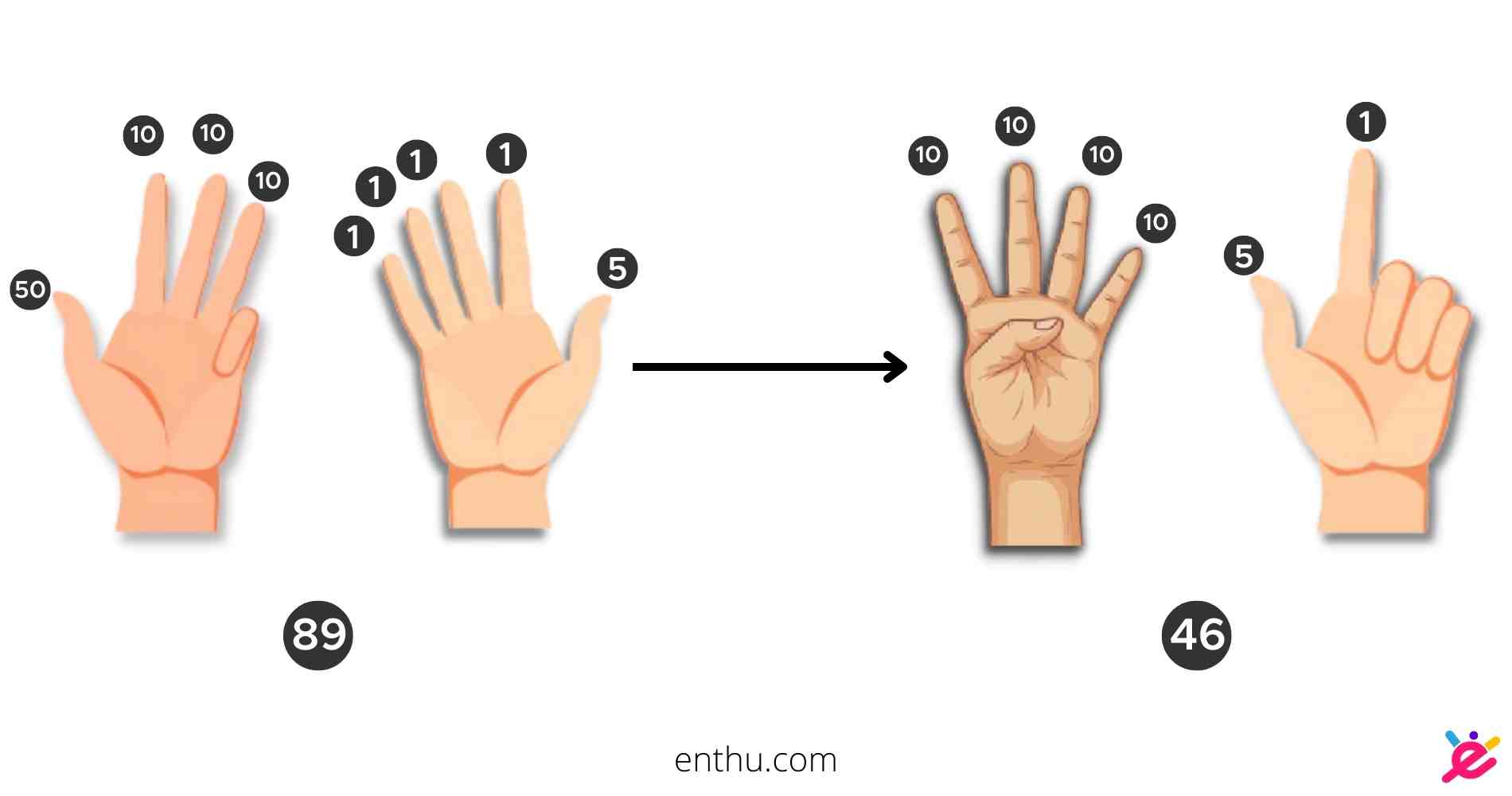
- Begin by representing 89: open the thumb on your left hand and 3 fingers (80) on your right hand, and the thumb and 4 fingers on your right hand (9)
- Next, subtract 43. Close the thumb and take out the pinky on the left hand as shown in the above picture. And, close 3 fingers on your right hand.
- Now count the remaining fingers. It’s 40 on your left hand and 6 on your right hand.
The answer is 46.
Multiplication on Finger Abacus
***You must learn multiplication tables to conduct multiplication on your fingers.
How to multiply single-digit numbers?
3✖4=12
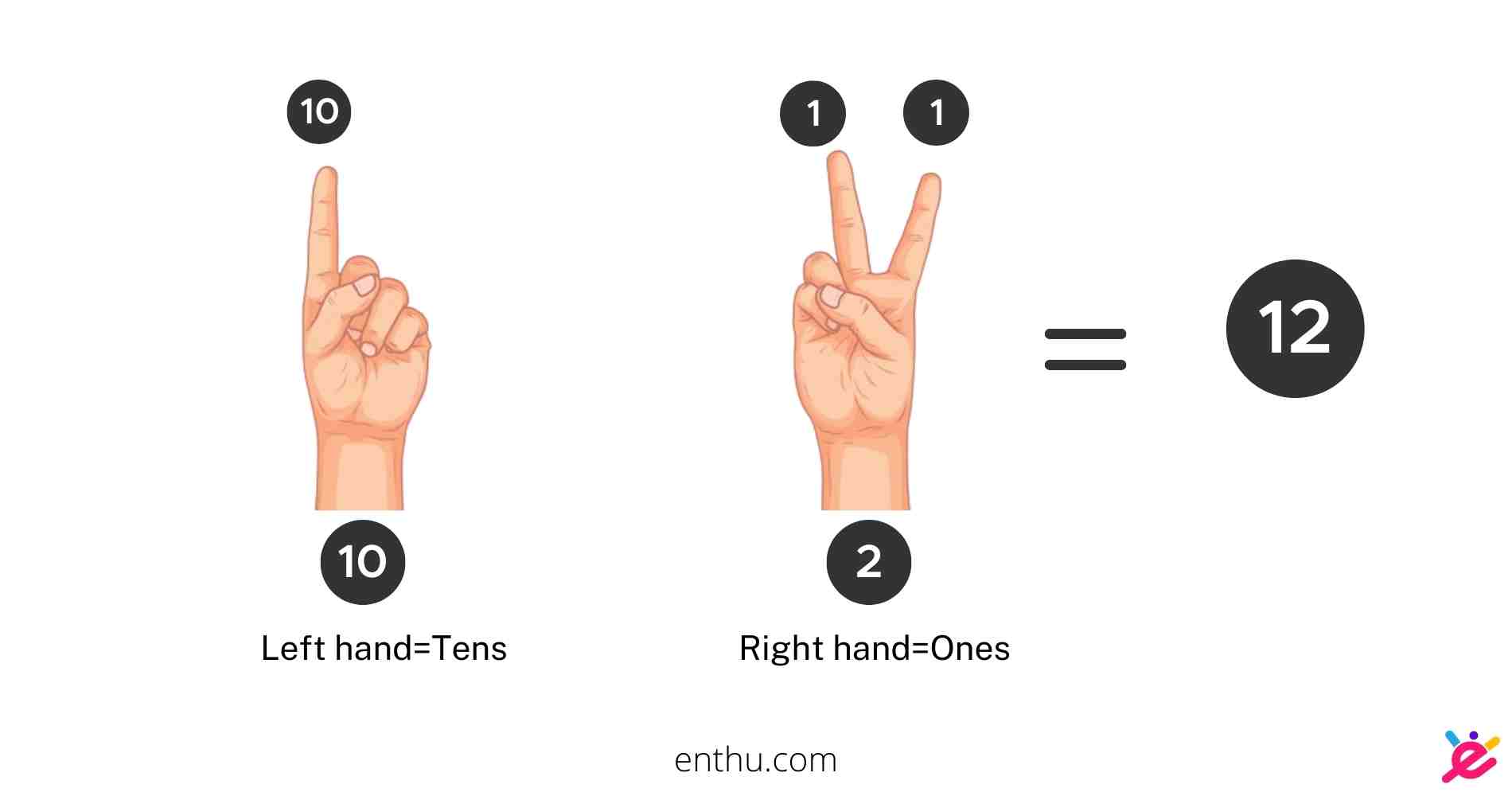
To represent 12, open 1 finger on the left hand and two fingers on your right hand. Remember, the left hand is tens-place, and the right hand is ones-place.
How to multiply double-digit numbers?
22✖4
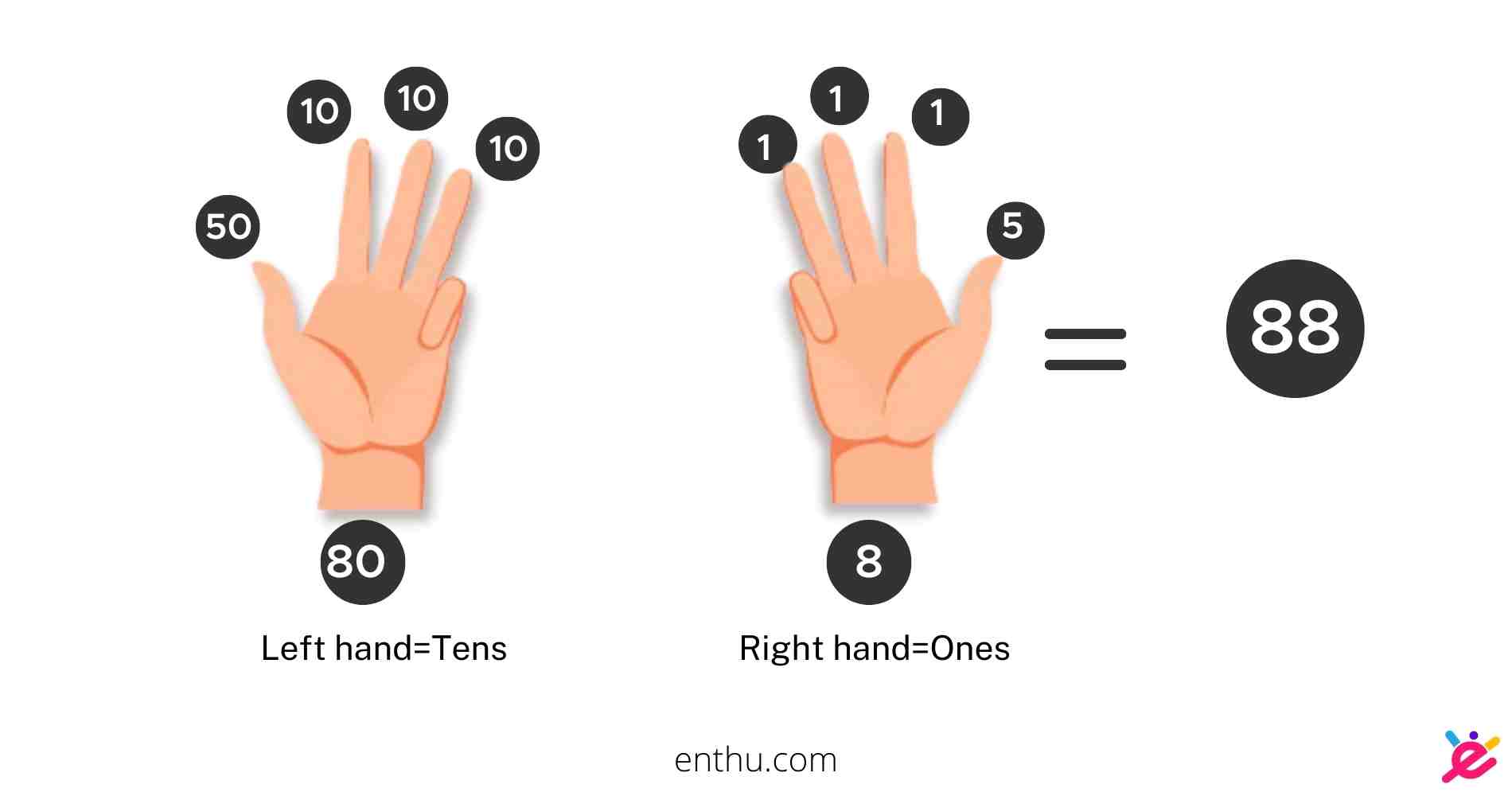 Now, for double-digit multiplication on fingers, multiply the ones-digit on your right hand and the tens-digit on your left hand.
Now, for double-digit multiplication on fingers, multiply the ones-digit on your right hand and the tens-digit on your left hand.
- 4 into 2 is 8, so open the thumb and 3 fingers on the right hand.
- Similarly, represent 8 on your tens-hand as well.
- So, we got 80 in our left hand and 8 in our right hand.
The answer is 88.
Wondering how to Multiply on an Abacus?
FAQs
What is the use of the index finger in an abacus?
The index finger of the right hand in the abacus represents 1, and in the left hand, it represents 10. The middle finger, ring finger, and pinky represent similar values.
How can I learn math with my fingers?
You can use your fingers to learn and practice mathematical operations. As a matter of fact, one can use their fingers exactly like a soroban. All you need to do is to learn finger abacus techniques.
How can I learn abacus math at home?
In recent times, learning abacus math at home is super easy. All you need is an abacus (your fingers do the work as well) and an instructor. You can hire an abacus instructor or join EnthuZiastic abacus classes from home.
What does the thumb stand for in finger abacus?
The thumb in the right-hand stands for 5, and in the left hand, it stands for 50.

Master Mental Math with Finger Abacus
Conclusion
Learning abacus comes with amazing benefits. From enhancing cognitive development to increasing memory, it comes with priceless results.
However, if you want an abacus-like calculation even outside the home/classroom without using the counting device, I suggest finger abacus.
The techniques are easy-to-understand and perfect for young kids, as well as, adults. If you want your kids to ace their math test, I suggest learning the chisanbop techniques.
